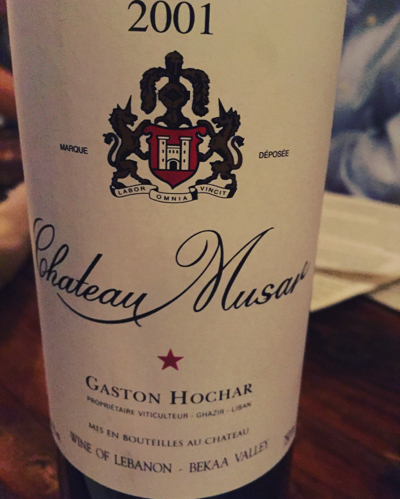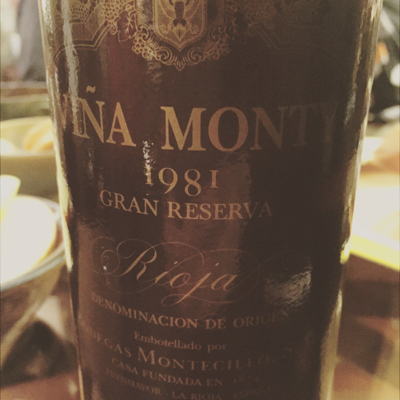Silver Foxes
Older is not always better, but try it anyway.
In Wine on 20 Mar 2017
Recently I had the immense pleasure of having dinner with some wine friends visiting town from Madison. We were pretty amazed to see a 2001 Chateau Musar Red on the list at Table, Donkey & Stick, and even more amazed at how awesome it tasted at 16 years old. This wine is always some blend of cabernet sauvignon, cinsault, and carignan, but I wasn’t able to find the cepage from this vintage. Gamey with a ferrous note and a very Tuscan florals-and-scorched-earth element, but still with a lot of dark fruit, this Lebanese gem held up beautifully with our meal.


The following week, I visited Madison and had a wonderful get-together with the wine group, and we had two more exciting aged wines: a 1981 and 1986 Bodegas Montecillo Viña Monty Gran Reserva. I hadn’t heard of the winery, but I looked it up and apparently it’s been around since 1874. I’m in the process of finding more information about them in English.
The ‘81 was definitely on its tomato-viney phase; not quite at the fennel point but as fragile as old bones. The ‘86, my birth year, had by contrast a wealth of fruit as well as a musky quality that at first I thought was cork taint but we decided was just an earthy thing. It was still so enjoyable and alive. While Decanter rates 1981 as an outstanding vintage in Rioja, I couldn’t find anything describing 1986 as more than fair (my birth year was a sadly inauspicious one in the wine world, though I believe I read that it produced some excellent gruner veltliner). Given that it wasn’t even a standout vintage the fact that the ‘86 was this delicious at over 30 years old was pretty impressive.
It’s such a rare treat to be able to taste well-stored wines with some age. If you’re interested in trying them, generally speaking I recommend purchasing older wines (let’s say ten years old or more) only from retailers and somms you trust rather than, say, online or from a random liquor store. This is the point where proper storage and minimal handling really become important and, frankly, a great bottle poorly stored might as well be Thunderbird. Restaurants and wine bars with a committed wine program are often great places to find aged wines that can’t typically be purchased in stores.
If you’re up for taking a chance, the rewards can be amazing, but know what you’re getting into: if you’ve never tasted a significantly aged wine before, it’s a completely different flavor profile. As a wine ages it develops what we call “tertiary” flavors like mineral, mushroom, and some floral qualities, as opposed to things like fruit (usually inherent to the grape) and oak (a factor of winemaking). If you’re used to young wine––and here I have to link to one of my favorite wine movie scenes ever––you may be better off sharing the cost with a few nerdy friends than splurging on your own.